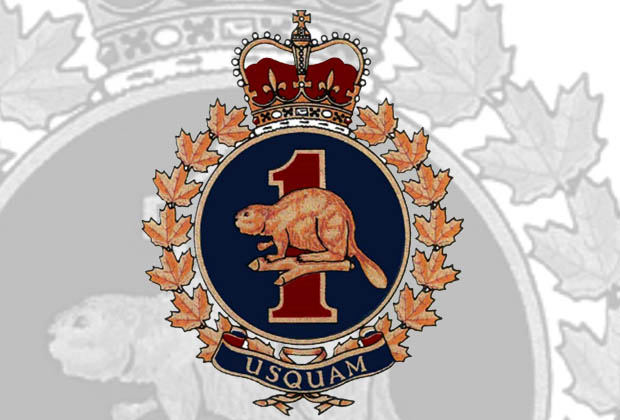
By: Captain Mackenzie Smith – 15 Sqn Force Protection Engineering Officer.
2017 marks the 75th anniversary since the founding of the Construction and Maintenance Units (CMUs) in 1942, the progenitors of 1 Engineer Support Unit (1 ESU). The CMUs formed in response to domestic infrastructure requirements created by World War 2, in particular the British Air Training Plan and the North West Staging Route. The CMUs had operational construction and maintenance capabilities and a level of self-sufficiency that permitted them to work in isolated areas throughout Canada. Different than 1 ESU’s current incarnation, the CMUs actually had a military and civilian labour force and heavy equipment capabilities, along with a mandate to conduct construction and maintenance on domestic facilities. By 1944, seven CMUs existed across Canada.
Between the years of 1939 – 1944, the CMUs completed thousands of projects, not all in support of the RCAF. Projects included the construction of naval facilities on both coasts, installing rail spurs, renovating detention barracks, runway paving, and construction of the North West Staging Route to supply the Russian theatre of war via Alaska.
At the cessation of WWII, all armed services faced a rationalization of forces and the original seven CMUs gradually disbanded or amalgamated down to one unit, 2 CMU, based in Calgary, AB. The Korean War, 1950-1953, saw an uptick in defence construction requirements, and 2 CMU grew to 500 personnel all-ranks and 1000 civilians. After Korea, 2 CMU faced a force reduction and a reorientation, primarily to focus on projects in Canada’s north. In 1957, 2 CMU built Canadian Forces Station Alert on the northern tip of Ellesmere Island, to this day holding the record for most northerly permanently-inhabited human settlement in the world.
Into the 1960’s, 2 CMU’s role began to shift from the conduct of construction and maintenance to engineering design and project management. To that end, on 1 April 1962, the unit was renamed 1 Construction Engineering Unit (1 CEU) and reorganized to fulfil this new role. The unit reduced to 75 all-ranks, lost its construction equipment, and moved to Winnipeg, MB as of 1 April 1964.
The Cold War drove many new kinds of projects for 1 CEU. Similar to the operation of 1 ESU today, 1 CEU deployed Specialist Engineering Teams (SETs) to domestic and international projects to perform design and project management. During this time, 1 CEU designed 36 radar sites of the Short Range Radar chain in Canada’s north, and deployed internationally to areas such as the Golan Heights.
In 1995, 1 CEU moved to Moncton, NB, and transferred from Air Command, being given a new role as an operational field unit under the Deputy Chief of Defence Staff. In this role, 1 CEU deployed to most Canadian missions in support of the Canadian Forces and other government departments. Deploying to the Canadian effort during the Gulf War in 1991, Bosnia, Croatia, Haiti, Italy, Kosovo, East Timor, Eritrea, and South-West Asia, the unit provided engineer reconnaissance, assessment, studies, design, and project management.
On 1 April 2003, 1 CEU restructured to its current form and was renamed 1 Engineer Support Unit. In 2013, the unit moved from Moncton, NB to CFB Kingston, where it currently resides. The mandate of 1 ESU is very similar to that of 1 CEU, providing specialist engineering support to the Canadian Armed Forces and other government departments anywhere in the world. 1 ESU maintained its tendency for involvement in every Canadian operation. The unit had significant impact in Afghanistan through the Provincial Reconstruction Teams from 2006-2011, and later in the Construction Management Organization in Kandahar province from 2008-2011, as well as numerous Technical Assistance Visits (TAVs) throughout the country. For its service in Afghanistan, the unit was awarded the distinguished Canadian Forces Unit Commendation in 2012. The unit also deployed SETs in the aftermath of the Haiti earthquake, and domestic operations such as the Red River Flood and the 1998 Ice Storm.
In 2012, 1 ESU moved under the command of the Canadian Forces Joint Operational Support Group, under the newly consolidated Canadian Joint Operations Command, maintaining its role as an operationally focussed organization. Post-Afghanistan, 1 ESU continues to provide engineering support to virtually every named operation and deploys SETs on TAVs all over the world. Recently there is renewed focus on the Canadian Arctic, due to 1 ESU’s engineering expertise in this environment, with considerable work being done to mitigate environmental issues. 1 ESU also continues to lead in the creation of operational support hubs globally, so that the CAF may deploy quickly anywhere on operation. In order to properly celebrate the 75th Anniversary of the unit this year, 1 ESU hosted a Mixed Dining-in on 17 October 2017 at the Captain Matthew J. Dawe Memorial Legion Branch 631, in Kingston, ON. The Guest of Honour for the event was former 1 ESU Commanding Officer, Lieutenant-General Chris Whitecross, CMM, MSM, CD, and current Commandant of the NATO Defense College. LGen Whitecross was accompanied by her daughter for the evening. In addition, 1 ESU also celebrated with an Engineer Fun Day on 20 October 2017, consisting of a ball hockey tournament, BBQ and Engineer Relay Race. 1 ESU members gathered in the Unit’s compound along with their families and participated in a day of fun to celebrate this Anniversary. The celebrations were kept modest, despite the significance of the milestone, due to the Unit’s operational tempo. 1 ESU is the engineering consulting firm, the project managers, and engineering expertise of the Canadian Armed Forces, and looks forward to a bright future supporting CAF operations in Canada and around the world. Usquam and Chimo!
